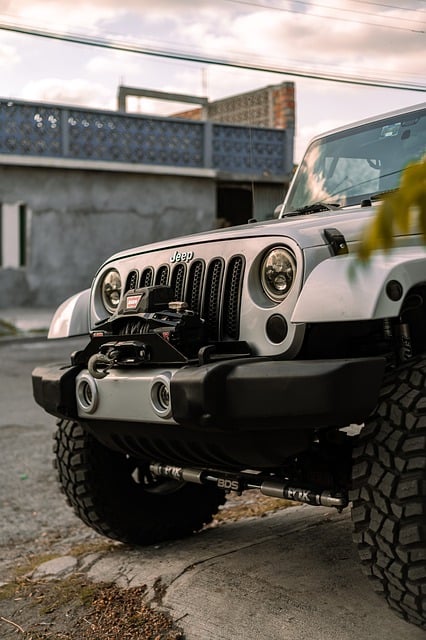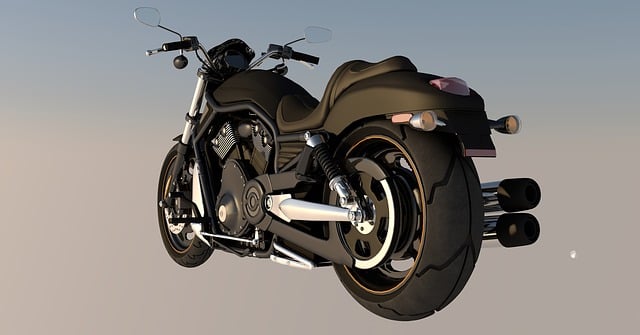Vehicle insurance is a crucial safety net, protecting individuals from financial loss due to accidents or damage. Key terms like deductibles and premiums, along with coverage types such as collision, comprehensive, and liability, are essential for understanding this protection. Comprehensive coverage offers peace of mind by safeguarding against unexpected events. When choosing a policy, assess driving habits, location, and vehicle needs, staying informed about trends and regulations. Understanding premium factors, such as car make and model, helps tailor coverage. Review policies to identify exclusions and consider additional protections like rental car coverage or enhanced comprehensive/collision options. Efficient claims processing ensures fair compensation after accidents, while strategic shopping and policy reviews can secure affordable Vehicle Coverage.
In today’s world, having vehicle coverage is not a luxury but an essential necessity. Understanding vehicle insurance and its various aspects can help you make informed decisions when choosing the right policy for your auto. From comprehensive protection to navigating claims, this guide delves into the basics, types, factors, exclusions, and tips for securing affordable vehicle coverage that suits your needs.
Understanding Vehicle Insurance: Basics and Necessity

Vehicle insurance is a safety net that protects individuals from financial loss in case of accidents or vehicle damage. It’s more than just a legal requirement; it’s an essential component of responsible car ownership. At its core, vehicle coverage compensates policyholders for repairs or replacement costs when their vehicles are damaged, and provides liability protection against claims from other parties injured in accidents caused by the insured vehicle.
Understanding basic insurance terms is crucial. This includes comprehending deductibles (the amount you pay out-of-pocket before insurance kicks in), premiums (the regular payments made to maintain coverage), and various types of coverage like collision, comprehensive, and liability. Each plays a distinct role in ensuring financial security on the road. By tailoring their policies to suit individual needs, drivers can enjoy peace of mind, knowing they’re protected against unforeseen events that could lead to significant financial strain.
Types of Vehicle Coverage: Comprehensive Protection

Comprehensive protection is a crucial aspect of vehicle coverage, offering peace of mind for drivers facing unexpected events. This type of coverage goes beyond the standard liability and collision policies by shielding against a wide range of potential damages. It includes protection from theft, natural disasters, vandalism, and even accidental damage not related to a collision, such as rolling down an embankment or hitting a fixed object.
When you opt for comprehensive protection, your insurance provider will cover the cost of repairing or replacing your vehicle, up to its agreed-upon value. This ensures that you’re not left with a significant financial burden in the event of unforeseen circumstances. Comprehensive coverage is especially valuable for all models and types of vehicles, providing drivers with comprehensive peace of mind on the road.
Choosing the Right Policy for Your Auto

When selecting a vehicle insurance policy, understanding your specific needs is paramount. Different cars come with varying levels of protection requirements, so it’s essential to choose a plan that aligns perfectly with your vehicle’s make and model. Vehicle coverage options can range from comprehensive, collision, liability, and personal injury protection (PIP), each catering to distinct scenarios. For instance, if you drive an antique car, you might opt for a policy that covers specialized restoration costs. Conversely, a new electric vehicle may warrant additional coverage for its unique technological components.
Assess your driving history, location, and usage patterns to make an informed decision. Urban drivers with frequent traffic exposure may require more extensive coverage compared to those in suburban areas. Regularly reviewing your policy is also crucial, as your needs might change over time. Stay updated on the latest vehicle insurance trends and regulations to ensure you’re always protected under the best possible terms.
Factors Affecting Vehicle Insurance Premiums

Several factors significantly influence vehicle insurance premiums, and understanding them is essential for obtaining the best rates. These include the make and model of your car, as different vehicles have varying levels of safety features and repair costs, directly impacting insurance companies’ assessments. For instance, newer models with advanced safety technologies may qualify for reduced rates due to their lower risk profile. Conversely, older vehicles or those known for higher maintenance costs can lead to higher premiums.
The type of coverage you choose plays a pivotal role as well. Comprehensive and collision coverages protect against damages beyond your control, like accidents or natural disasters, but they come at an additional cost. On the other hand, liability-only coverage offers basic protection against claims from third parties but may not fully safeguard your interests. Therefore, carefully evaluating your needs for vehicle coverage is crucial when shopping around for insurance policies.
Common Exclusions in Vehicle Insurance Policies

Many vehicle insurance policies have certain exclusions, which are circumstances or events that are not covered under the policy. Understanding these common exclusions is crucial when considering vehicle coverage to ensure you’re adequately protected. Some typical examples include damage caused by natural disasters like floods, earthquakes, or severe weather conditions, which are often excluded from standard policies.
Additionally, certain high-risk activities or vehicles may be subject to specific exclusions. These could include racing, drag streeting, or driving off-road, as these actions increase the likelihood of accidents and damages. Furthermore, some policies might not cover losses due to neglect, such as leaving a vehicle unlocked in an unsecured area, or failure to maintain the vehicle properly. Always review your policy thoroughly to comprehend what is and isn’t covered under your vehicle insurance.
Adding Extra Benefits to Your Vehicle Coverage

When considering vehicle insurance, don’t just settle for the basics. Enhancing your vehicle coverage with additional benefits can offer peace of mind and valuable protection in unforeseen circumstances. Many policies now include options such as rental car coverage during repairs, which can be a significant advantage if you frequently rely on your vehicle.
Consider also adding comprehensive or collision coverage to protect against damages not related to accidents, like theft, vandalism, or natural disasters. These extras ensure that your vehicle coverage is robust and tailored to your needs, providing comprehensive protection for your investment.
Navigating Claims Process: What You Need to Know

Navigating the claims process is a crucial step in ensuring you receive the compensation you deserve after an accident. The first step is to notify your insurance provider as soon as possible, providing them with all relevant details about the incident. This includes a description of what happened, the other party’s contact information, and any witnesses present. It’s essential to keep records of this communication for future reference.
After notification, the insurance company will assign a claims adjuster who will guide you through the rest of the process. They will assess the damage to your vehicle, often requiring photos or even a physical inspection. During this time, it’s helpful to take detailed pictures of the damage, keeping records of any repairs or replacements needed, as these will be crucial for determining your Vehicle Coverage benefits and ensuring a fair settlement.
Tips for Securing Affordable Vehicle Insurance

Securing affordable vehicle insurance doesn’t have to be a daunting task. One effective strategy is to shop around and compare quotes from multiple insurers. This allows you to see different price points and understand what each policy covers in terms of Vehicle Coverage. Online platforms and comparison tools can significantly streamline this process, helping you find the best rates for your needs quickly.
Another key tip is to consider increasing your deductible. While a lower deductible might seem appealing, it generally results in higher premiums. By opting for a slightly higher deductible, you could save money on your monthly payments. Additionally, reviewing your policy annually and updating it as necessary can help ensure you’re not paying for unnecessary coverage. Keeping your vehicle maintained and safe driving habits can also contribute to lower insurance costs, as insurers often offer discounts for both these factors.
